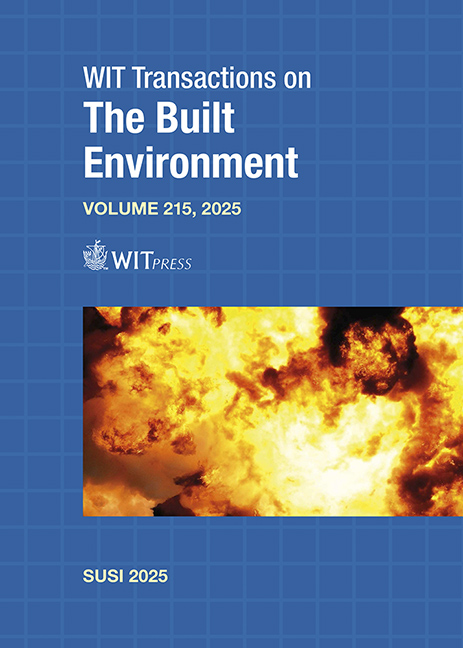DEFORMATION OF BURIED PIPELINES BY SUBSOIL DETONATION
Price
Free (open access)
Transaction
Volume
215
Pages
11
Page Range
63 - 73
Published
2025
Paper DOI
10.2495/SUSI250061
Copyright
Author(s)
ALEXANDER J. M. SCHMETS, JASPER T. BLOM, LAMBERTUS KOENE
Abstract
Transport pipelines are critical for the distribution of energy commodities, refined products and essential materials like water and hydrogen. While often buried underground for protection from environmental factors, they remain vulnerable to distant threats such as intentional or accidental explosions. This study investigates the mechanical response of steel pipelines to seismic excitation from nearby buried explosive charges. An experimental approach was employed to measure the stresses and deformation of a buried, straight steel pipeline segment using high-frequency strain gauges attached to its surface before burial in damp, sandy soil. The gauges were strategically placed to capture various deformation modes, such as ovalisation and axial strain. Seismic loading was applied using buried plastic explosive charges weighing up to 16 kg TNT-equivalent, detonated at distances up to 8 m from the pipeline centre. Seismic ground shock characteristics were evaluated using triaxial MEMS accelerometers. The results establish a relationship between the explosion intensity, measured ground shock characteristics (e.g., peak particle velocity) and pipeline deformation. For the experimental scenarios, pipeline deformation remained within the elastic limit, with maximum strains measured in the order of 100 – 200 X 10-6. The ground shock was found to be significantly damped between the detonation point and the pipeline. Thus, when no other loads are present, transport pipelines buried in dry, sandy soil are predicted to deform elastically for subsoil detonations up to 100 kg TNT-equivalent at a 14.5-m distance.
Keywords
subsoil detonation, gas pipelines, UXOs, soft soil, safety distances, steel deformation





